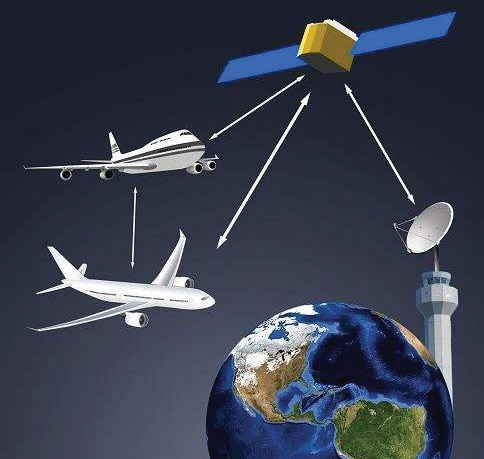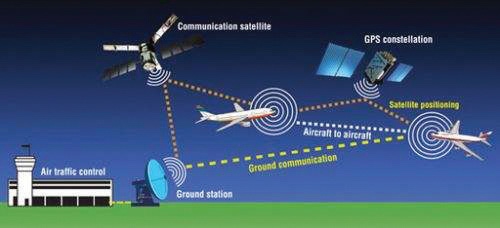Case Study
Civil Aviation Administration of China’s Air Traffic Management Bureau
The CAAC East China Regional Administration ensures continuous availability of the ADS-B air traffic control system with the Stratus® ftServer® platform
The Air Traffic Management Bureau of the Civil Aviation Administration of China (CAAC/ATMB) oversees national air traffic services, civil aviation communications, navigation, and surveillance, and aviation meteorology and flight information. The organization is involved in the testing and implementation of Automatic Dependent Surveillance —Broadcast (ADS-B) systems, which provide stateof-the-art air traffic monitoring capabilities to improve safety and efficiency in today’s crowded airspace. ADS-B systems automatically receive parameters, such as position, height, speed, heading, and identification numbers, from airborne craft via satellite-based GPS technology and broadcast that data to other aircraft or ground stations. These systems represent a significant milestone in the advancement of civil aviation traffic control in China.
The challenge

In the mid-2010s, the CAAC/ATMB ran an older version of the ADS-B system on two Dell™ x86 servers in redundant network mode to process, integrate, and transmit wireless signal data. However, the server performing data analysis and compilation experienced repeated machine failures, which undermined the stability of the entire ADS-B system. This single point of failure interrupted network requests and caused the ADS-B system to crash—an incident that could put aircraft safety and security at risk. In addition to these performance and availability issues, system administrators found managing and maintaining multiple servers simultaneously to be time-consuming and costly.
As the CAAC/ATMB prepared to test a next-generation version of the ADS-B system, technical leaders decided to implement a high availability solution to eliminate single points of failure and ensure continuous system operation for always-on air traffic monitoring.
The solution
In 2017, the CAAC/ATMB selected the Stratus ftServer 4810 continuous availability platform to keep the next-gen ADS/B applications up and running with no unscheduled downtime or loss of in-flight data. Deployed in the CAAC/ATMB’s Shanghai ground station, the fully integrated ftServer platform provides 99.999+% availability through redundant components, lockstep firmware, and data synchronization. The ftServer system is made up of two identical customer replaceable units—each with its own processors, memory, and storage—enabling it to withstand transient errors and power spikes that would take down other x86 systems. Lockstep processing ensures that no transactions are lost, while multi-path I/O failover prevents data loss and corruption. As important, the ftServer 4810 provides continuous ADS-B system availability without requiring software modifications or failover scripts.
CAAC/ATMB runs the ADS-B applications in virtual machines on a single ftServer system to reduce costs, space, and energy consumption, while improving dynamic scheduling of computing resources. Virtualization also makes it easy to for system administrators to back up the applications without impacting availability or performance.

“ADS-B technology is revolutionizing the field of aviation though advanced communication, navigation, surveillance, and air traffic management. By ensuring continuous availability of the ADS-B system, the Stratus ftServer platform is helping CAAC/ATMB improve aviation safety and efficiency in China. We rely on the ftServer system to deliver the high levels of reliability and performance these critical applications demand.”
Civil Aviation Administration of China
The results

Shortly after deploying the ftServer platform in December 2017, CAAC/ATMB collaborated with Aviation Communication & Surveillance Systems (ACSS), L3, and Thales to conduct the first tests of the ADS-B air traffic safety systems in China. The demonstrations were performed on three Airbus A321s operated by Shanghai-based carrier Juneyao Airlines on approach to Shanghai’s Hongqiao International Airport. Thanks to ftServer, the ADS-B system operated continuously—and at a high level of performance—to enhance situational awareness and decision making for pilots and air traffic management alike. These successful tests are paving the way for broader applications of ADS-B across China’s aviation infrastructure.
The operational benefits of the ftServer, however, extend beyond its superior availability and performance. Self-monitoring, self-diagnosing, and alerting, and remediation capabilities increase operational efficiency and simplify issue management, saving time and effort for system administrators. Automated online parts replacement eliminates guesswork and allows ADS-B applications to continue running—even while the ftServer is being serviced—for zero system interruption. Combining continuous availability with operational simplicity, ftServer delivers low total cost of ownership and worry-free computing for CAAC/ATMB.






